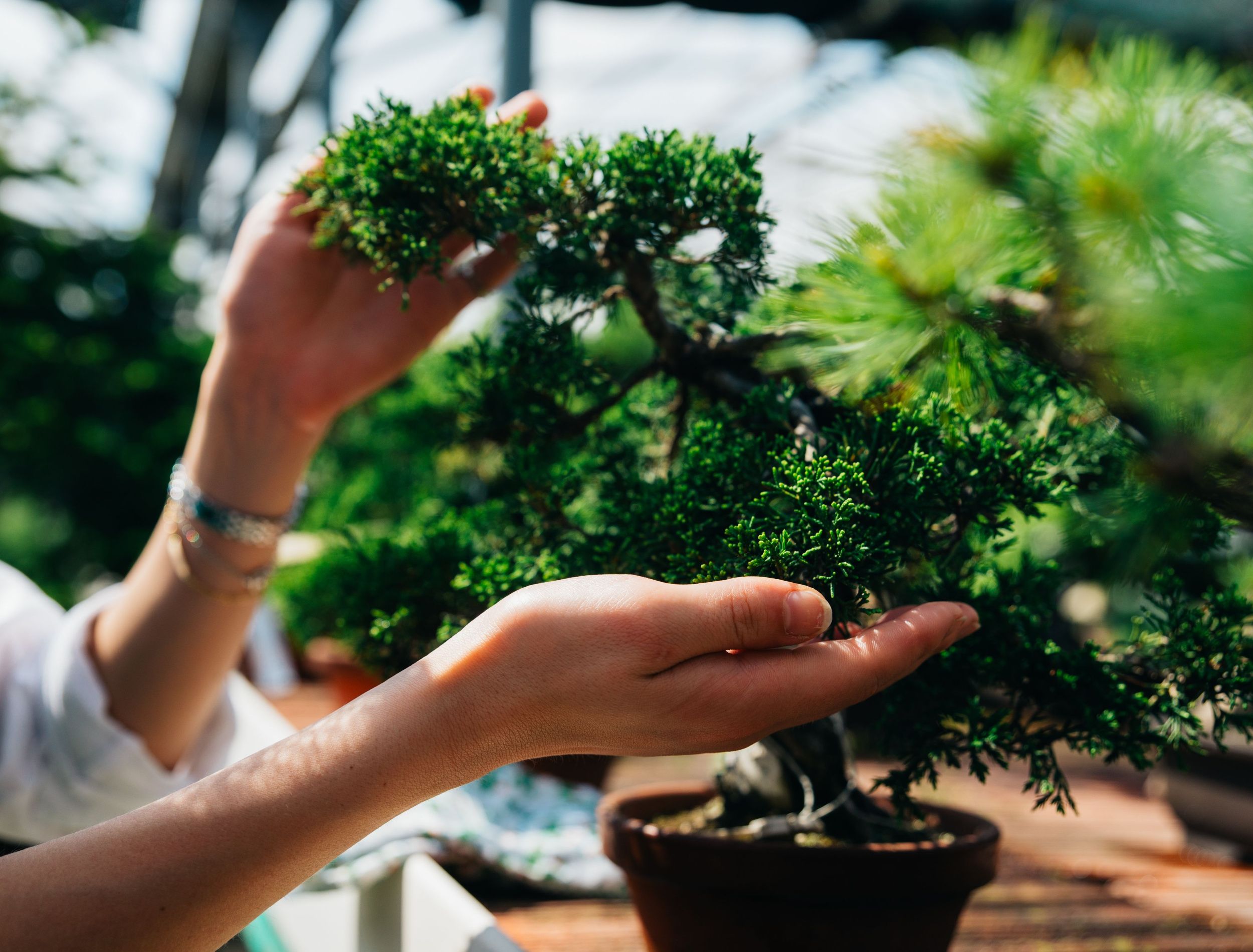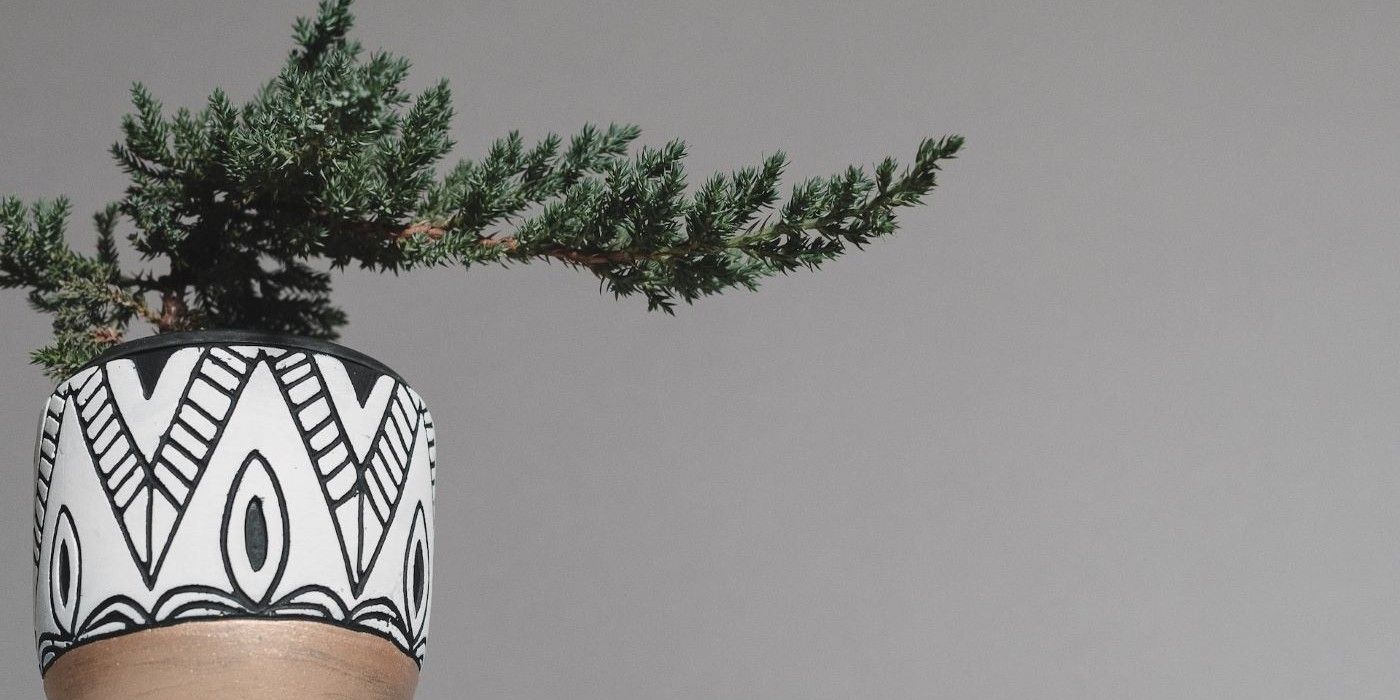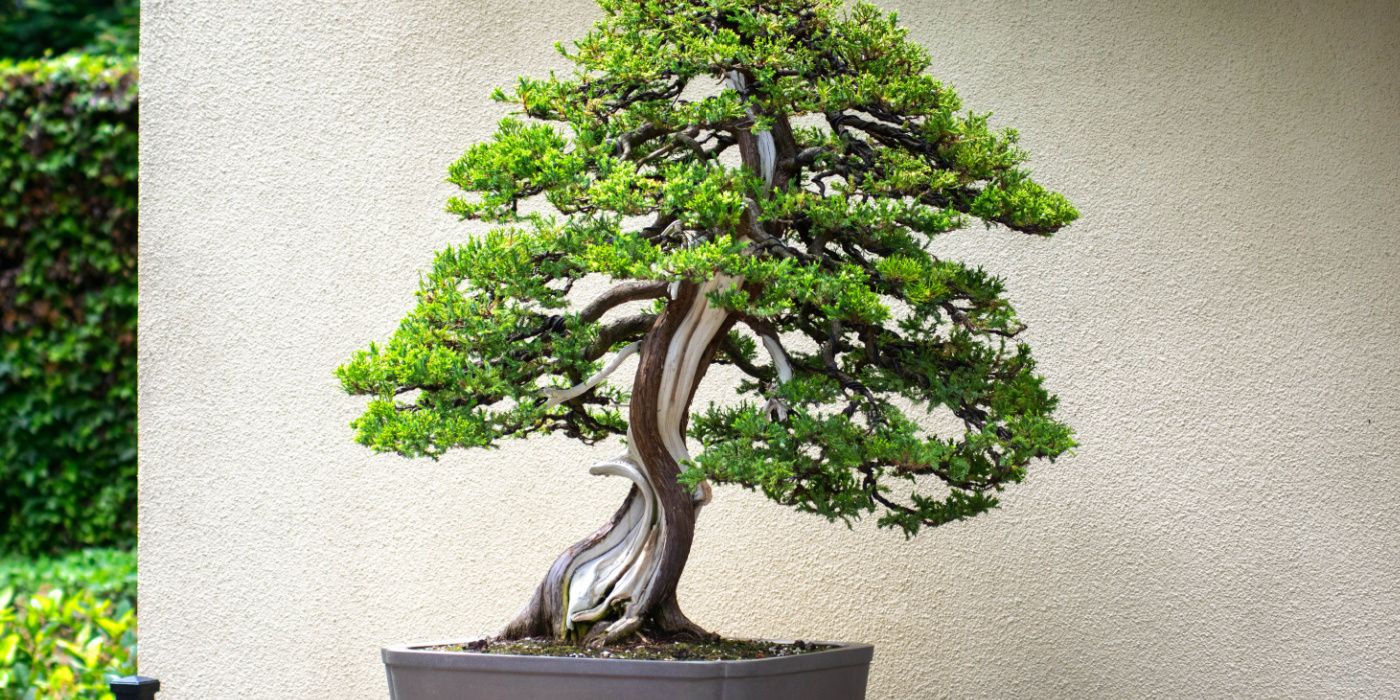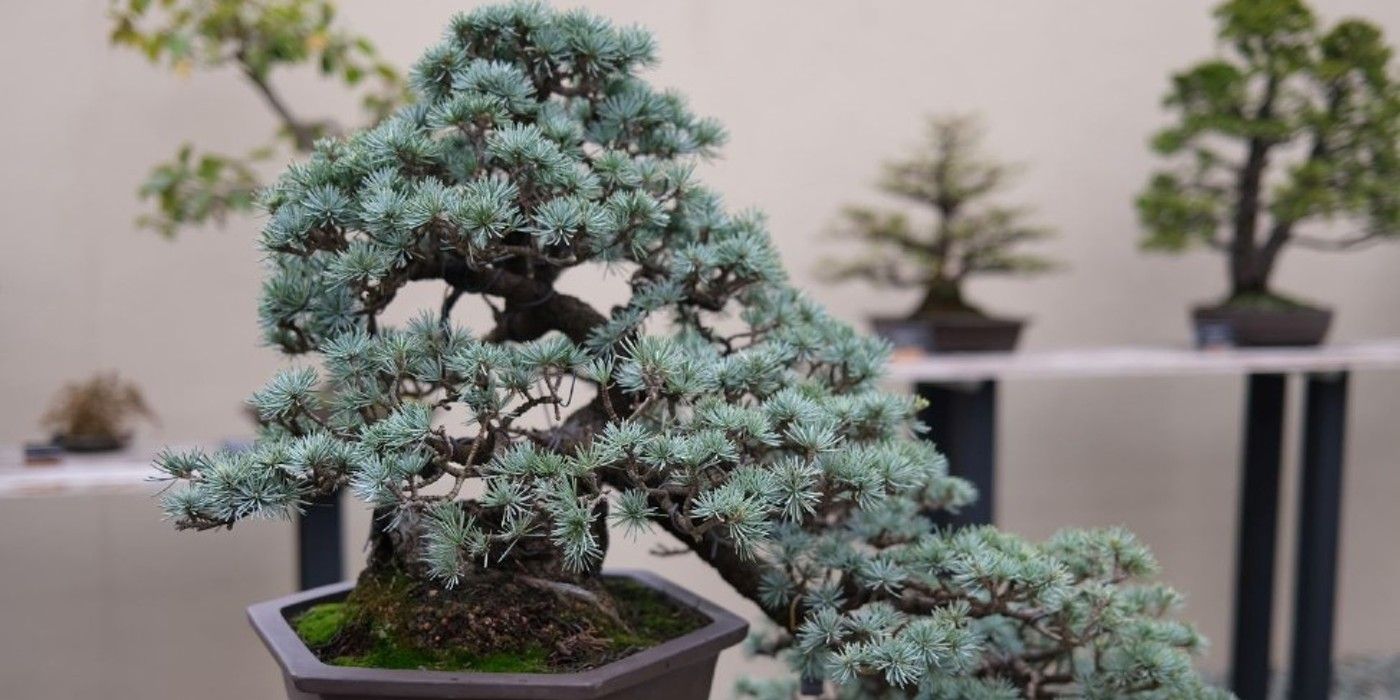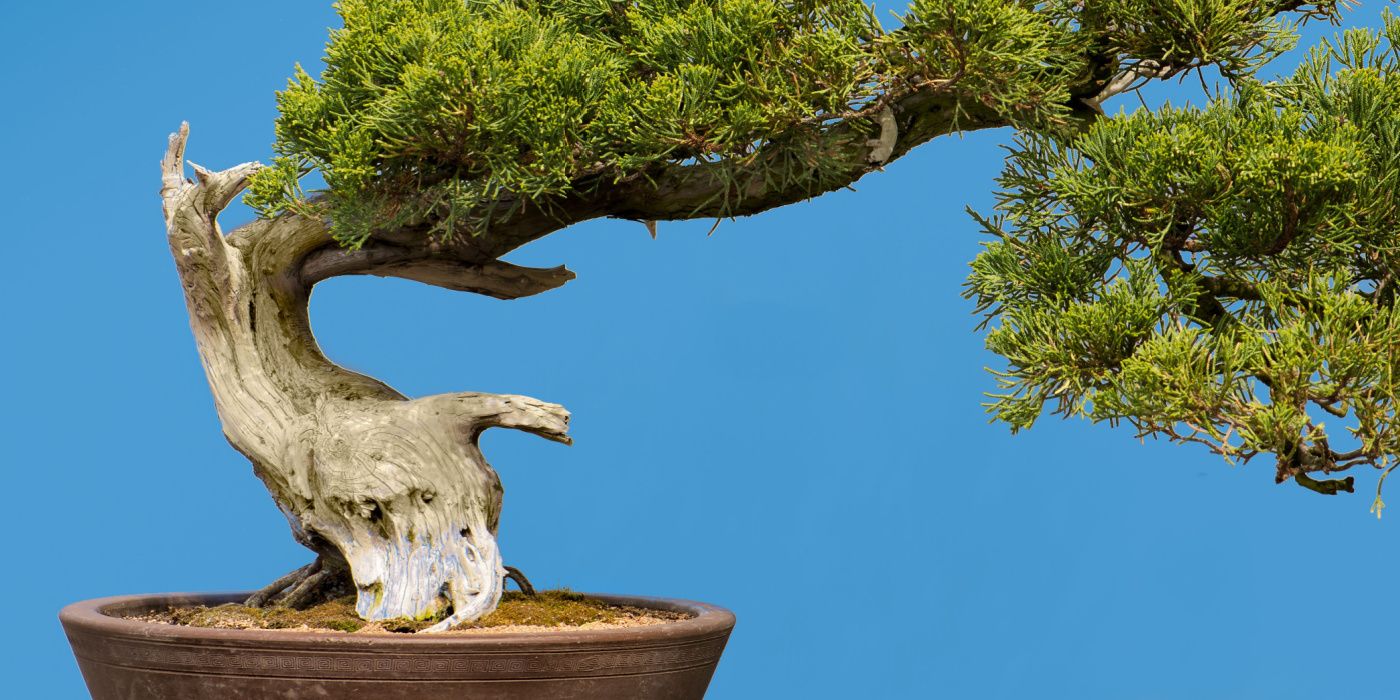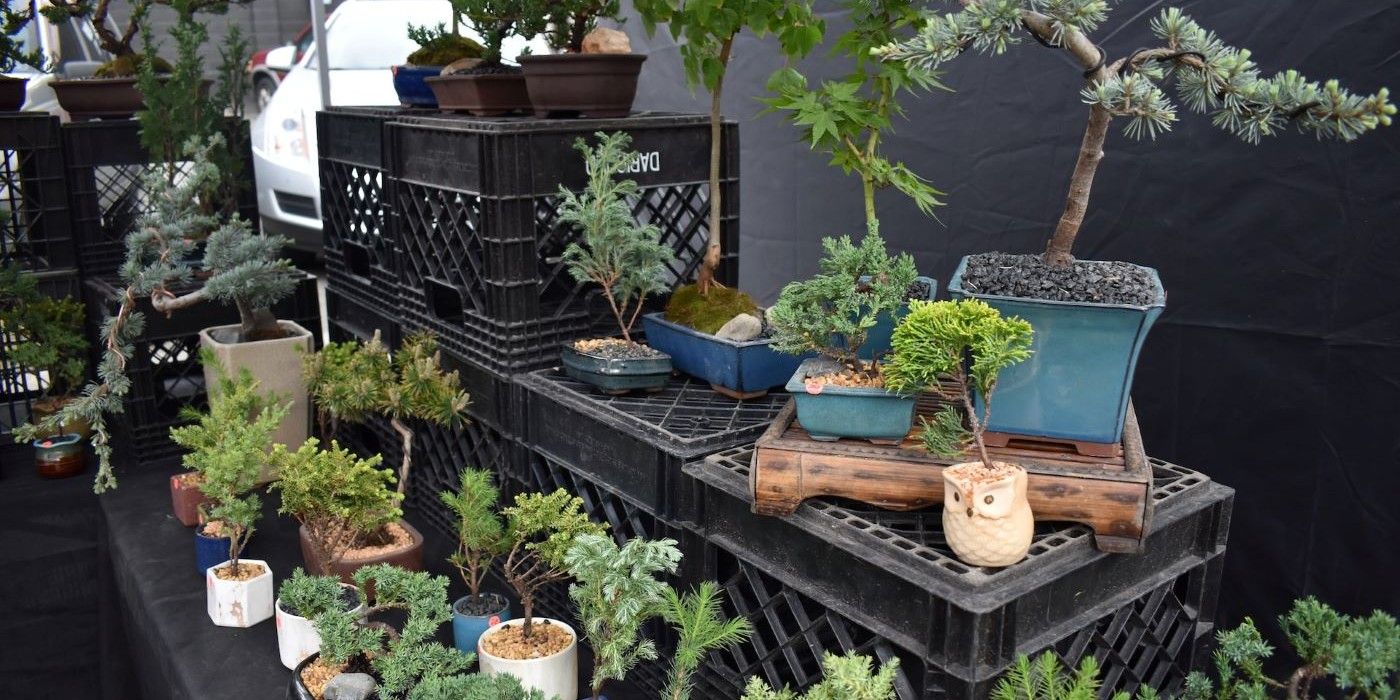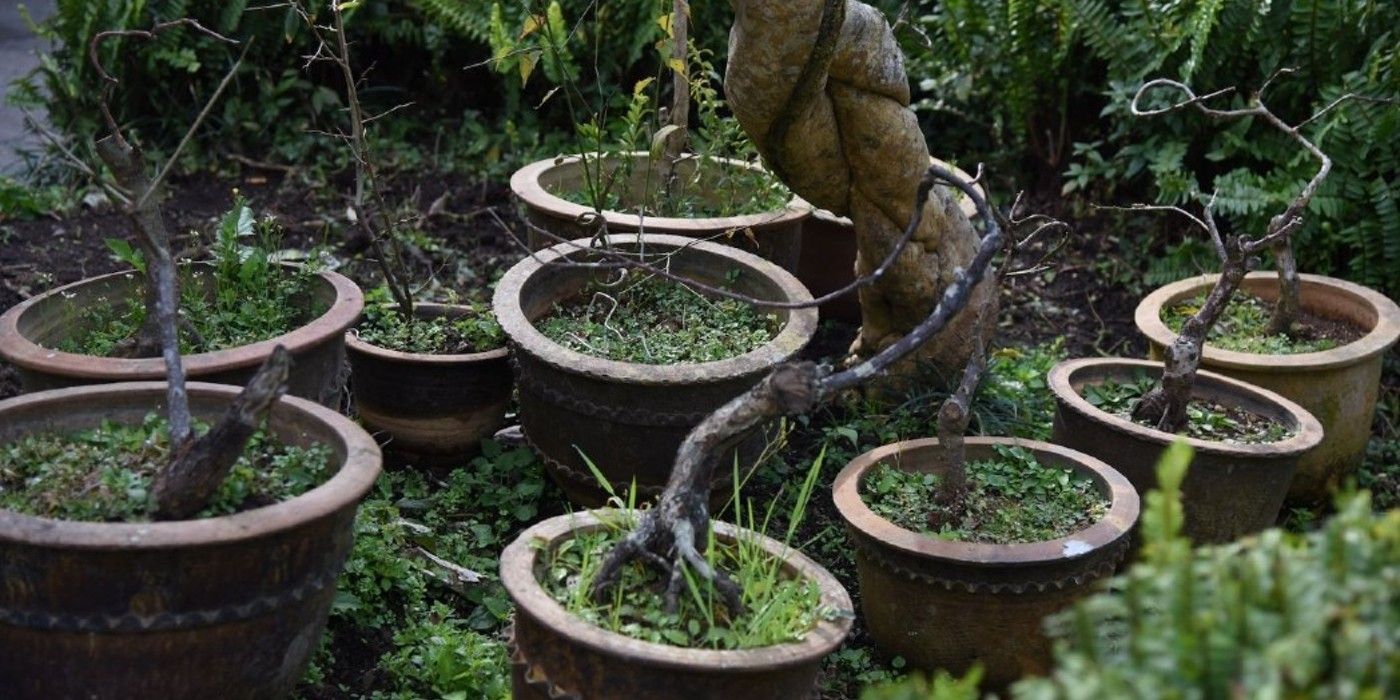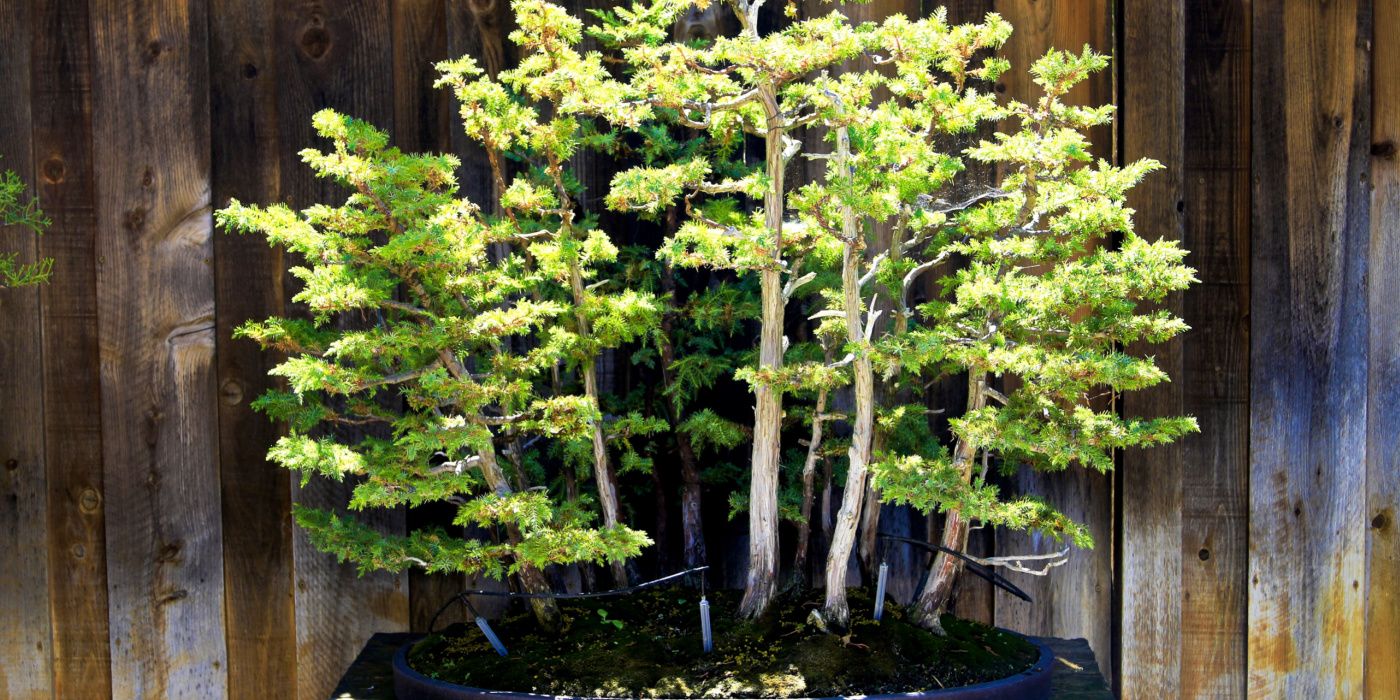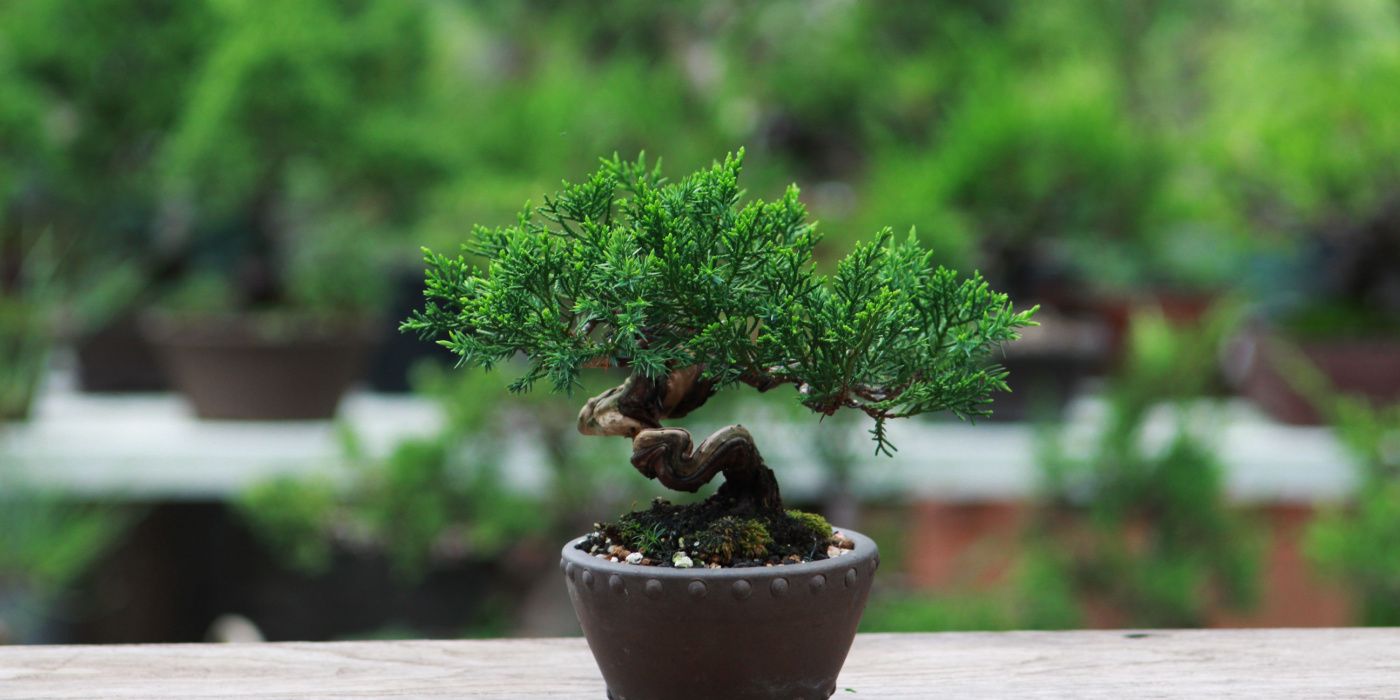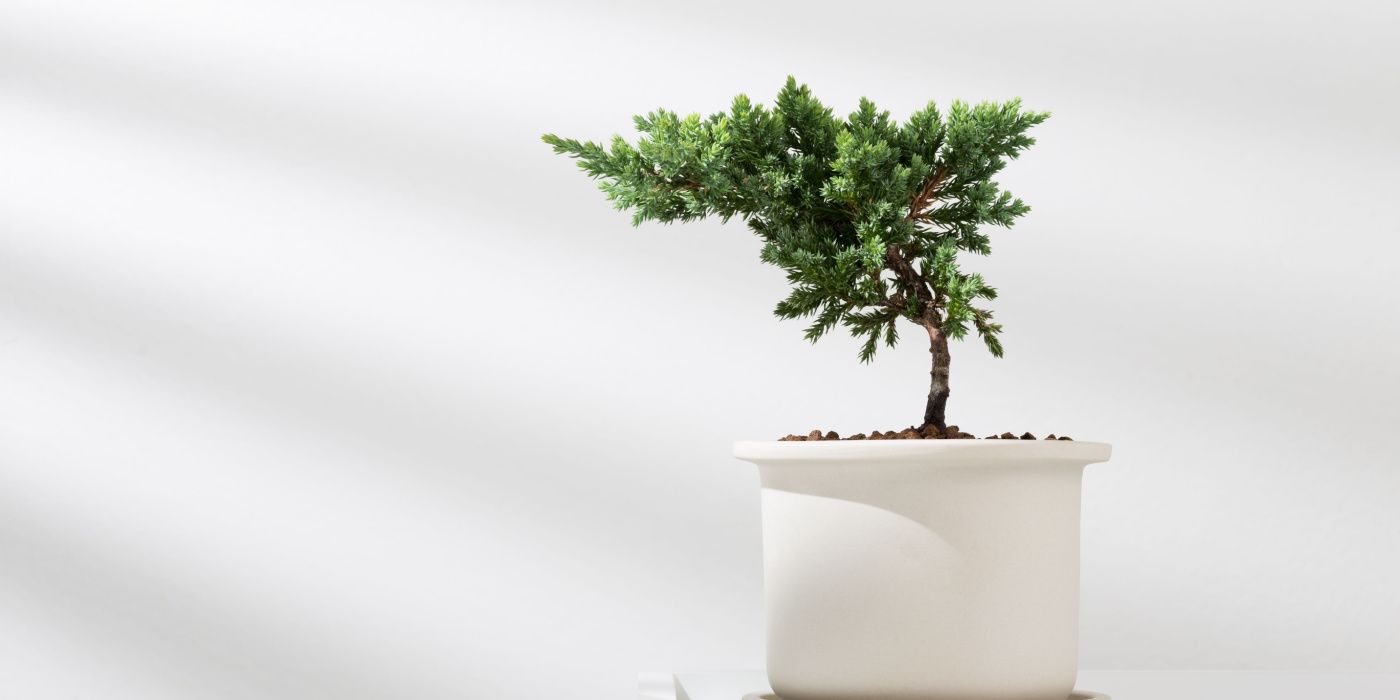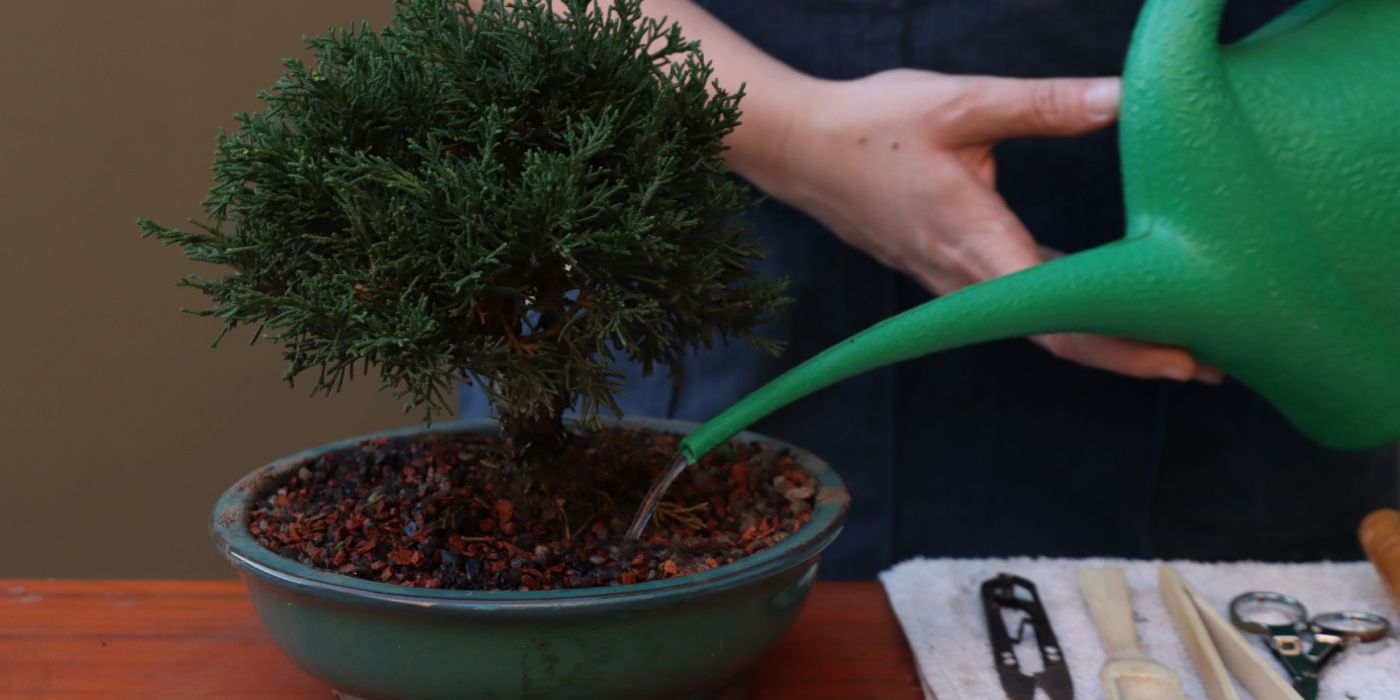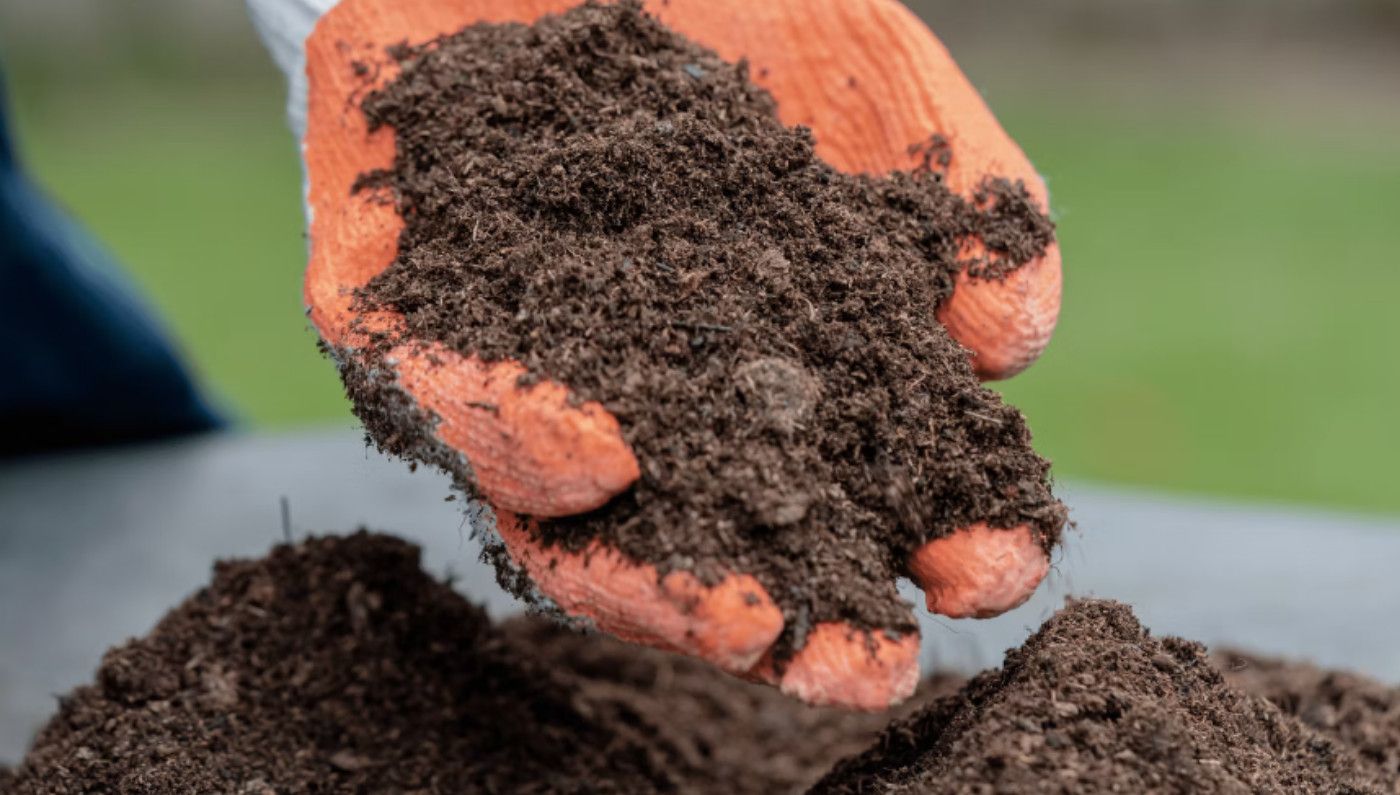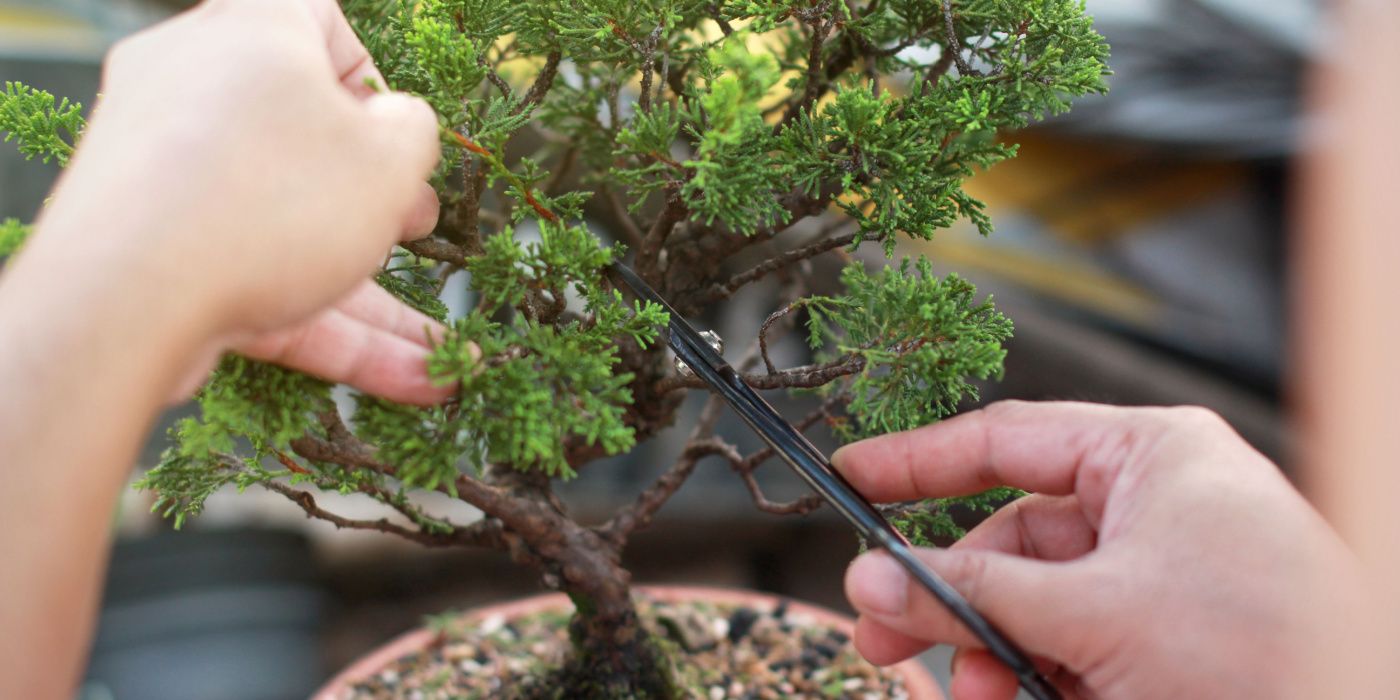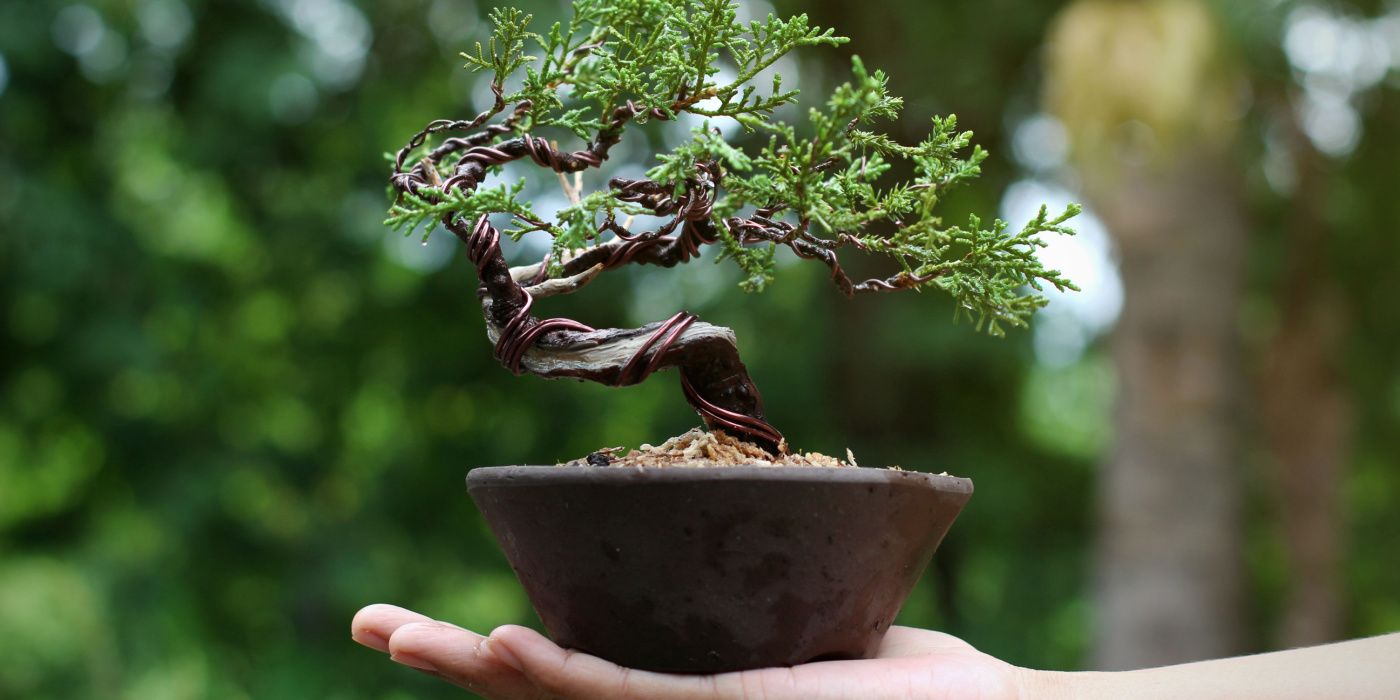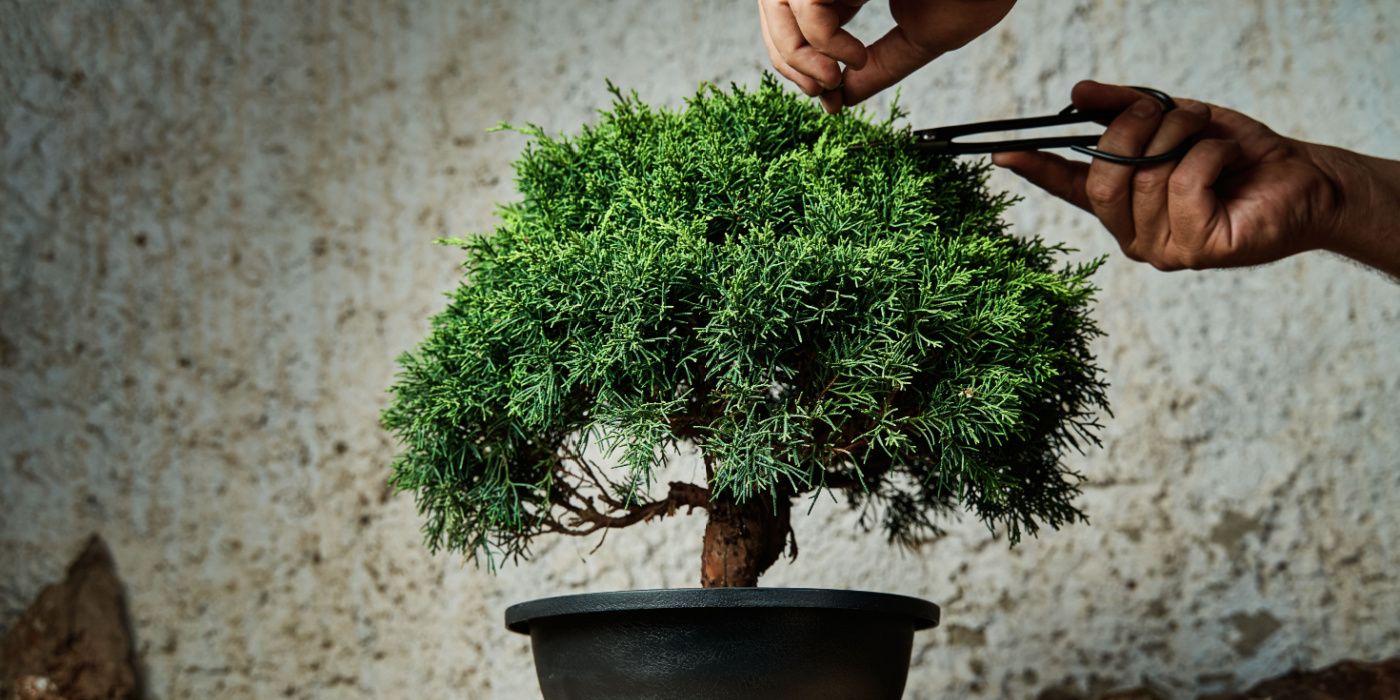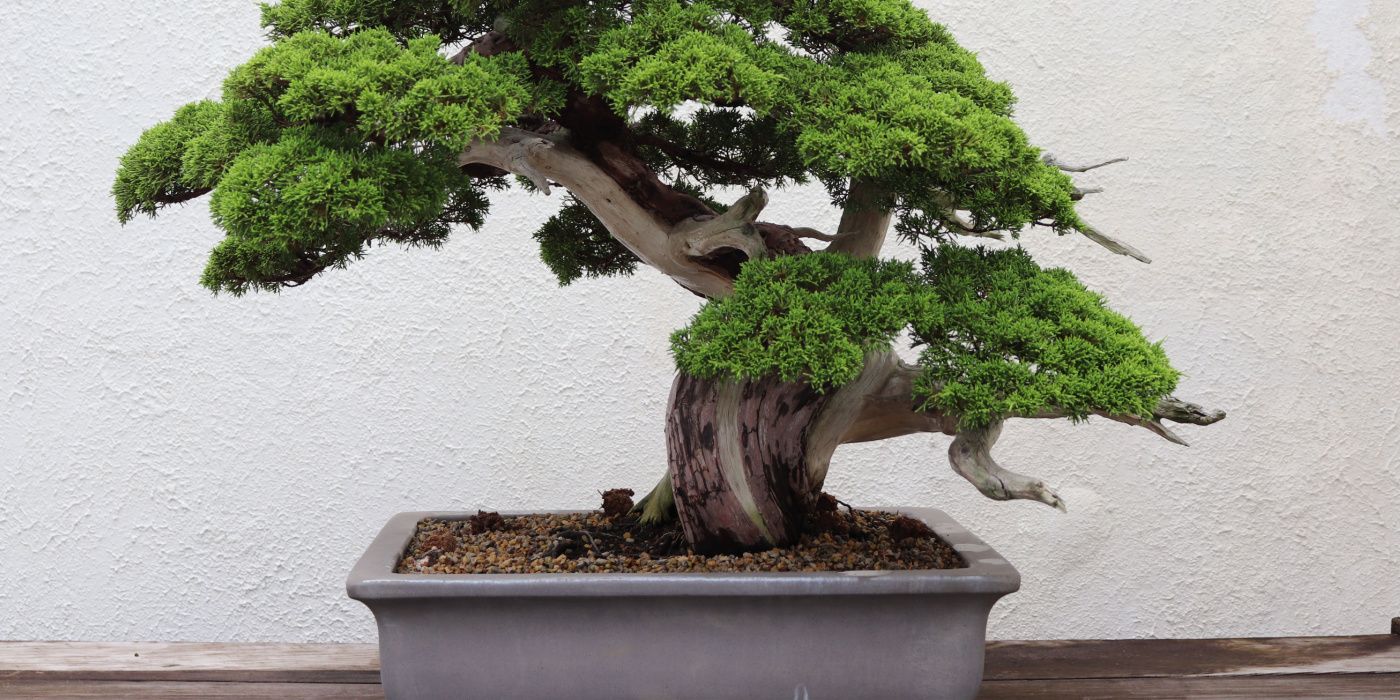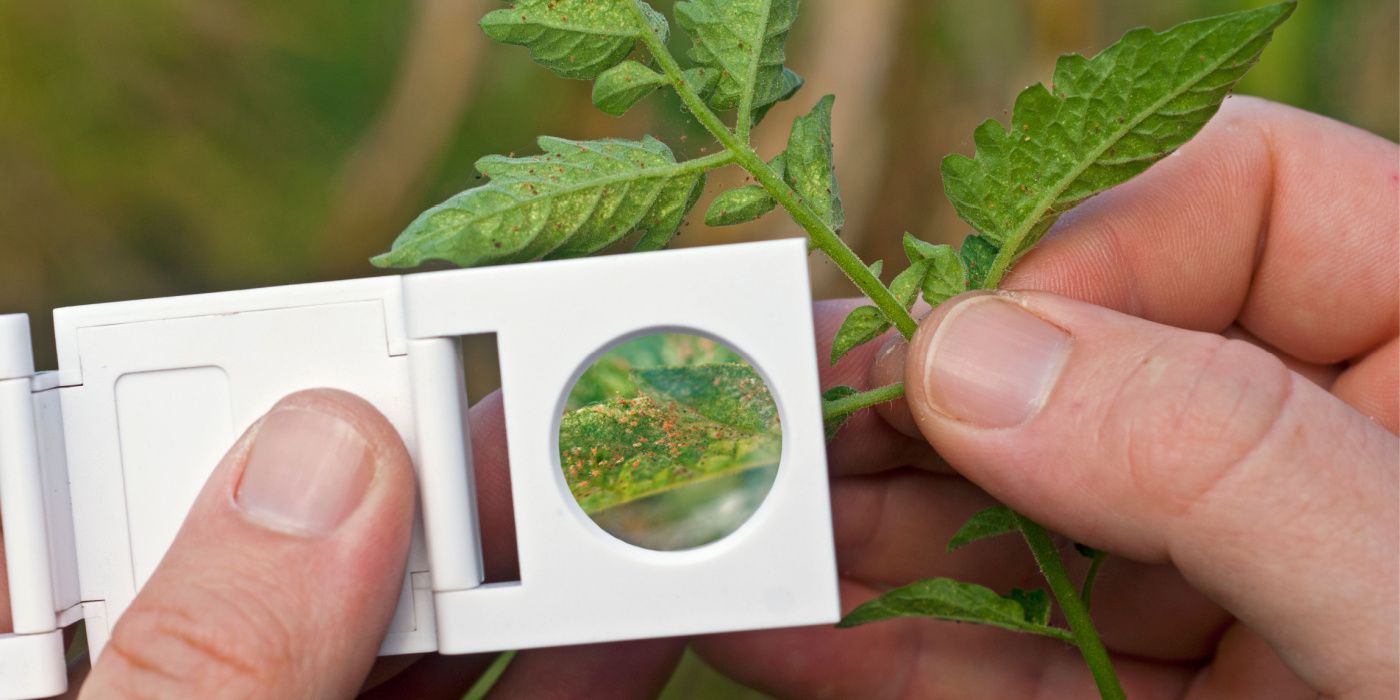Key Takeaways
- Juniper bonsai trees are not a specific species of tree, but any tree species can become a bonsai tree by breeding it in a container and keeping it small.
- Junipers are a popular choice for bonsai trees because they grow slowly and require little care.
- Juniper bonsai trees have unique foliage that changes as they mature, ranging from needles to scale-like foliage in various colors. They also produce berry-like cones that are a favorite food of birds.
When you enter a garden of juniper bonsai trees, tranquility surrounds you as the stress of life seeps away. More than simple gardening, growing juniper bonsai trees is actually a form of art based on the beliefs of Zen culture. The core idea is that, by their existence alone, these trees create an atmosphere of peace and serenity, reducing stress and anxiety naturally. The art of bonsai was designed to produce these feelings of calmness similar to meditation.
Discover everything you need to know, so you can introduce this plants tranquility into your own life! Learn how to care for juniper bonsai trees!
Defining the Bonsai Tree
A method of growing, not a species of tree
The term ‘bonsai’ translates from Japanese to English as ‘planted in a container’. So, while a lot of people assume that bonsai is a species of tree, that’s not true at all. In fact, any tree species in the world can become a bonsai tree by breeding it in a container and keeping it small.
- Bonsai trees are grown from the same seeds as regular sized trees of the same species.
- Bonsai trees are kept at a smaller size through cultivation and pruning.
- The goal is for their overall shape and appearance to mimic their natural counterparts that are allowed to reach their full size.
The juniper bonsai tree is one of the preferred bonsai species because it grows very slowly. Junipers are also hardy plants that requires little in the way of care. Some species of junipers are native to the Japanese mountains, which lends them a special place in the heart of bonsai enthusiasts, since it was the Japanese culture that introduced the world to this practice.
With trees that grow quickly, it’s harder to keep them properly trimmed. It's also difficult to bend and wire the branches of quick-growing trees in order to keep them growing in a particular direction and design.
Origins of Bonsai Trees
Dating from ancient China and adopted by Japanese culture
It’s not certain just how far the horticultural practice of bonsai dates, though the Chinese have been practicing the cultivation and art for centuries. The evidence displayed in museums attests to how far back the Japanese fascination with this practice goes.
- The practice was known as penjing in ancient China and was the predecessor to what the Japanese later adapted as bonsai.
- Back in the sixth century, when the Japanese visited China, their Imperial ambassadors — as well as students of Buddhism — traveled to the mainland in order to learn and spread knowledge.
- They enjoyed a great many of the arts of the Chinese people and took large quantities of items – including bonsai trees – back with them to Japan as souvenirs or gifts from their travels to foreign lands.
There are plenty of works of art that date back to this time, depicting these travels, the items of interest (including bonsai trees), and the overall Japanese enjoyment of Chinese culture. And it was during this time frame that the practice of creating bonsai trees entered into Zen Buddhism.
Choosing Juniper for your Bonsai Tree
The benefits of this slow-growing tree
|
Genus |
Number of Species |
Categories |
Native Areas |
|---|---|---|---|
|
Cypress |
Between 50 and 70 |
|
|
When it comes to bonsai trees, junipers are a popular option. Juniper bonsai are among the easiest to grow and don’t require as much attention as some other types. In fact, if you tend to forget about and neglect plants, you're busy, or you're new to growing bonsai trees, a juniper bonsai is a great choice!
There are dozens of species of juniper trees, and they are categorized into two groups based on the type of foliage they have as they mature. Determining what sort of juniper you have starts by distinguishing between these two groups.
Luckily, the best thing about these commonly sold species is that they all have similar structures and, therefore, similar care and cultivation instructions and guidelines. So, even if you're not completely sure which variety of juniper bonsai you have, the care will be similar.
When you’re looking at juniper bonsais with scale-like foliage, there are five species commonly cultivated for purchase.
|
Chinese Juniper/Japanese Shimpaku |
|
|---|---|
|
Itoigawa Shimpaku |
|
|
California Juniper |
|
|
Rocky Mountain Juniper |
|
|
Sierra Juniper |
|
If you have a juniper bonsai tree with needle-like foliage, it is most likely going to be one of three species that are most often found in bonsai gardens.
|
Japanese Needle Juniper |
|
|---|---|
|
Green Mound Juniper |
|
|
Common Juniper |
|
With so many options, it may seem like a lot to take in, but when you consider that all of these species are treated mostly the same way, it’s much less difficult to figure out the best way to care for your juniper bonsai tree.
Unique Aspects of Juniper Bonsai Trees
Their foliage changes as they mature
If you study juniper trees in nature, you’ll find that the foliage on almost all of them starts out as needles, with the scale-like foliage appearing later in life on some species. This is somewhat unusual, since most trees don’t see a change in foliage type during growth. Whether needles or scales, you’ll find that the various trees range in color, with the foliage running the gamut from light green to a very dark blue-green shade.
The fruit of these trees are berry-like cones, and they are usually round or oval. They can measure anywhere from 3 millimeters to about 2 centimeters. Juniper berries don’t ripen quickly, taking up to two years to do so. However, once they ripen, they're a favorite food of many birds!
The seeds of juniper trees are fairly small, and they're often round with sharp corners or edges. In nature, when a bird eats the fruit, they excrete the seeds into the soil. From this, junipers are spread naturally.
When it comes to cultivating junipers for the use of bonsai trees, you'll need to plant your own seeds since the birds won't be able to help you.
Sizes for Bonsai Trees
Discover the classification system for bonsai trees
The appearance and shape of the juniper bonsai trees you create should reflect what you see in nature — just at a smaller scale. The aesthetic design should be similar to those found in the mountains where junipers naturally grow. Because of their locations and the variety of species, there are many options for styling your juniper bonsai tree.
- Just as there are multiple ways to style your bonsai tree, there are also multiple sizes of bonsai trees possible.
- The important thing is to adhere to the standard of it being kept in miniature, in a pot or other container.
When you think of bonsai trees, you likely consider the smallest categories, such as those showcased in The Karate Kid by Mr. Miyagi. However, some trees grow faster than others, which makes them more difficult to prune to those extremely limited sizes. Thankfully, the art of bonsai expands to larger scales and juniper bonsai trees are fairly simple to keep in any of the classifications.
|
Classification |
Size |
|---|---|
|
Keshitsubo |
1 to 3 inches |
|
Shito |
2 to 4 inches |
|
Mame |
2 to 6 inches |
|
Shohin |
5 to 8 inches |
|
Komono |
6 to 10 inches |
|
Katade-mochi |
10 to 18 inches |
|
Chumono or Chiu |
16 to 36 inches |
|
Omono or Dai |
30 to 48 inches |
|
Hachi-uye |
40 to 60 inches |
|
Imperial |
60 to 80 inches |
This classification system has been a source of debate more than once in the past, which has led to questions about where the lines should be drawn. You'll see this particularly in the smallest categories — there's quite a lot of overlap.
The original classification system was based on weight – determined by the number of men needed in order to move the particular tree and its container. But as times have changed, so has the way this is measured and used.
While some of the trees more suited to larger classifications of bonsai can still be grown in very tiny models, these tend to be more abstract and not reflect the way those trees appear in a natural setting.
Picking the Perfect Container for Your Bonsai
A shallow, earthenware container that adds to the art
|
Material |
Depth |
Color |
|---|---|---|
|
Earthenware materials such as terracotta or clay. |
Shallow — keep the pot the same depth as the width of your tree's trunk. |
Earth tones so they don't detract from the bonsai tree itself. |
The container you use is one of the most important aspects of growing a juniper bonsai tree. The type of container can affect the amount of growth you get from your bonsai as well as play a vital role in the overall appearance and art of the tree. The typical earthenware container used in bonsai art is quite shallow to help control the depth of the root system. In turn, this helps keep the growth under control.
If you prefer a larger sized juniper bonsai tree, you may want to consider the larger jade pots sometimes used, which are deeper and allow for greater root growth that supports a somewhat taller tree. This is also an option if you want to design a more abstract structure, with branches trained to dip below and around the lip of the container.
Caring for Your Bonsai Tree
Take its basic needs into account
When considering how to care for a juniper bonsai tree, certain factors like temperature, sunlight, water needs, humidity, fertilizer, and soil all come into play.
|
Temperature |
Light |
Water |
Humidity |
Soil |
Fertilizing |
|---|---|---|---|---|---|
|
Between 10 and 85 degrees Fahrenheit |
Six hours direct sun |
Soak roots in pan with 1 to 2 inches of water for five to 10 minutes |
40 to 50 percent |
High-nitrogen fertilizer in the spring and balanced fertilizer throughout summer months |
Best Temperature for Juniper Bonsai
Junipers grow in natural environments that are fairly dry and cold, which makes them sturdy and not particularly finicky. They prefer a temperature range between 10 and 85 degrees Fahrenheit.
- In the winter most juniper bonsais will be perfectly fine until the temperature drops to around 20 degrees Fahrenheit, at which point they need protection from the cold. Their roots are not allowed to grow deep into the ground, where they won’t freeze, so they need extra protection.
- In the summer you want to make sure you provide extra moisture, as well as ample shade during the warmest part of the day. Your juniper bonsai tree could dry out or the foliage could burn and shrivel if it overheats, and this can be very difficult to overcome, even in such a hearty plant.
You may see a change in the foliage with the coloration shifting to a purplish brown shade when it starts to get cold enough. If this happens, don't panic! This color change is part of an internal mechanism junipers use to protect themselves from frost in nature.
Give Your Juniper Bonsai Enough Sunlight
Juniper bonsai need at least six hours of direct sunlight a day in order to thrive. Some species, like the 'Green Mound Juniper' are more tolerant of part-shade conditions, but most junipers require plenty of direct sunlight. If you're struggling to provide this inside your home, try moving your juniper bonsai outdoors.
Container plants like bonsai trees are fully dependant on you to provide for their needs, but they're also easier to move around. This makes it possible for you to keep your juniper bonsai in ideal conditions all the time. On shady days, chase the sunlight! When the weather is hot, move your juniper bonsai into some shade. And, of course, carry your juniper bonsai indoors in the winter where it can find a sunny window to soak up the sun while protecting its roots from frost.
In the winter, south-facing windows offer the most direct sunlight. Keep your bonsai in front of a south-facing window and you'll be sure to provide it with enough light.
Watering Needs and Humidity Levels for Juniper Bonsai
Most junipers tend to grow in fairly dry environments. Therefore, they don’t tolerate over-watering well. When it comes to moisture, you should make sure the soil in which your juniper bonsai tree is planted is completely dry before you water it. This usually takes a couple of days or longer, depending on your climate.
- Allow your bonsai tree's roots to sit in a shallow container with an inch or two of water for five to ten minutes.
- Check to see if your bonsai's soil needs moisture by sticking your finger in the top inch of soil — if i's dry, water.
- Adding too much moisture to the soil can lead to root rot or growth of mold and mildew, all of which are detrimental to the health of your bonsai.
Although excess water isn't good, air humidity is beneficial to your juniper bonsai. If you don’t live in a damp environment, misting the foliage of your plant can help it thrive. Spritz it evenly with a spray bottle daily to help its foliage absorb moisture.
Choosing the Right Soil and Nutrients for Your Juniper Bonsai Tree
Most juniper bonsai trees grow at a decent rate but wouldn’t be considered fast growers — with the exception of a few species, such as the Green Mound Juniper. This is good for bonsai trees, as fast growth increases the challenge in managing the shape and design of the tree. However, you want enough growth that you’re able to work with the new sprouts to create the design you want. The only way a bonsai tree gets nutrients is with fertilization since they're in containers and can’t draw from the earth.
- During the growing season, you’ll want to use standard fertilizer – preferably organic – that comes in pellets or balls.
- Administer to the soil once a month so that you aren’t overwhelming your juniper bonsai with food but assure it has enough nutrients to grow properly.
- Alternatively, you could use liquid fertilizer on a weekly basis.
If you're looking for faster growth of your juniper bonsai tree, try applying a high-nitrogen fertilizer in the spring. This will promote new growth that you can use to help shape your tree.
When it comes to soil requirements for bonsai trees, they're pretty lenient. Bonsai trees can grow in almost any type of soil as long is it drains well. However, there are a few particular soil mixes that allow juniper bonsais to thrive.
- Mix equal parts sand and potting soil for a well-draining, simple, soil.
- Combine lava rock, pumice, and akadama in a 1:1:1 ratio.
When deciding between inorganic and organic mixes for soil, most bonsai growers choose mostly inorganic mixes. Organic materials break down as time goes on, which reduces the amount of soil drainage. Inorganic substrates like lava rock won't hold very many nutrients or water, which gives you more control over how much water and fertilizer your juniper bonsai receives.
Special Care Requirements for Juniper Bonsai Trees
Learn how to prune and wire juniper bonsai
Care requirements like water and sunlight are universal needs across the plant world; however, growing a bonsai tree requires some special care. In order to keep the tree small and in the correct shape, you need to prune and wire the branches. These care techniques are the difference between a well-groomed, petite bonsai tree and one that's overgrown and unhappy.
How to Trim a Juniper Bonsai Tree
While many practices of creating bonsai designs are the same no matter which bonsai species you choose, learning how to prune juniper bonsai trees requires special attention to two areas.
- Be careful when trimming around the deadwood. Juniper is a great source of deadwood, since the veins within a broken or dying branch dry out completely. However, the areas of the juniper bonsai tree with deadwood are easy to break. If the area of deadwood is fairly large, it might make sense to split it off, leaving much easier access to the living, flexible parts of the tree.
- Don't trim your juniper bonsai like a bush. In nature, some juniper species grow more like shrubs than trees. However, when cultivating juniper bonsai trees, steer clear of pruning them like shrubs by removing all the growing tips. This makes the tree weaker, and it might have a hard time coming back.
Juniper bonsai trees are typically designed with long shoots that stick out on one or both sides of the tree. To achieve this appearance with thick pads of foliage, you can pinch and cut shoots at the base to avoid growth in unwanted areas. Use very sharp scissors to make the cuts to avoid damaging the rest of the tree.
At times, the pads of foliage will grow too dense for the health of the tree and the artwork you want to accomplish. In these cases, you can thin out the foliage using the same sharp scissors at the base. Do not remove all foliage from any single branch, or that branch will die. However, you can be aggressive in your pruning with a juniper bonsai tree because they are typically quite strong and can withstand the efforts you make.
- Cut branches as needed, but be sure you aren’t trimming back all new growth. If you happen to purchase or grow a tree with an extensive amount of deadwood, take precautions to avoid harming the tree by removing large areas of deadwood and exposing the new growth that is more malleable.
- Be careful with the purchase of youthful juniper bonsai trees. When you start to prune them, especially those that transition from needles in youth to scales in maturity, you’ll find that the needles may grow back thicker and for longer than normal due to stunted growth leading to delayed maturation. Save the aggressive pruning for when the tree is more mature.
- Only prune during the growing season. You can start very early in the season, getting a good idea of what’s going to be needed to shape the tree and maintain the appearance of a beautiful juniper, but don’t continue to trim and prune too long or too late into or past the season.
How to wire a juniper bonsai
The process of shaping the bonsai tree and forcing it to grow into a particular shape is called wiring. This step is necessary because the plant you’re working with naturally wants to continue to grow without a defined shape until it is much larger. Remember, these are not genetically modified seeds, and in nature, the tree wouldn’t grow long, lush limbs just a few inches from the base of the trunk. So, you have to use wires to train the limbs to move and grow in the direction you want.
|
When do you wire? |
|
|---|---|
|
Protect the branches |
|
|
Thin the foliage |
|
|
Fan out the foliage |
|
|
Wire the branches |
|
Twisting and curving the trunk and branches is quite popular with juniper bonsai trees. The wood of junipers is quite hard, which allows you to wire the branches without trouble. Softer trees might require you to use twine instead of wire to prevent damaging the trees.
Propagating Your Juniper Bonsai
Cuttings are the most popular method
Juniper bonsai trees can be propagated using both seeds and cuttings. Which one you choose depends on your personal preferences. The biggest difference between the two methods is how soon you'll have a new juniper plant after propagation.
|
Seed propagation |
Propagating by cuttings |
|---|---|
|
At least two years after planting |
A rooted tree by the following growing season. |
You could propagate juniper bonsai trees from seeds and be quite effective. However, it’ll be at least two years before you experience enough growth to start shaping, wiring, and pruning the resulting plant.
Typically, these bonsais are propagated from cuttings, taken from the semi-hardwood parts of the growth or branches that grew during the current season. If you take the cuttings between July and November and get them settled, they should have taken root by the following growing season.
|
Prepare |
|
|---|---|
|
Cut |
|
|
Strip foliage |
|
|
Slice your cutting |
|
|
Rooting hormone |
|
|
Prepare your pot |
|
|
Plant |
|
|
Mist |
|
|
Create a mini greenhouse |
|
|
Sunlight and temperature |
|
|
Watering |
|
|
Timing |
|
|
Transplant |
|
Juniper bonsai cuttings are sometimes difficult to grow well. To ensure your success, plant several cuttings at once. Be sure that, if you do intend to plant your juniper bonsai tree in a garden rather than in a container, you first cultivate it in a container for at least one year. You need a much more mature root system to survive in the ground.
For best results when taking a cutting for propagation, remove the cutting the day after you water your juniper bonsai tree. Always remove your cutting in the morning and transplant as quickly as possible to prevent it from drying out.
Repotting Your Bonsai
You'll need to cut the roots every few years
Because of root system growth and the chances of root rot, you’ll need to repot your juniper bonsai tree every two years. This is typical of all bonsai trees, though some do need to be transplanted more often.
With juniper bonsais, when the tree gets older, you can wait longer, because their growth is slower and moving them so frequently can cause more harm than good.
|
When to repot |
|
|---|---|
|
Trimming roots |
|
|
Soil type |
|
|
Container size |
|
Pests and Disease of Bonsai Trees
Keeping your juniper bonsai healthy
For the most part, if your juniper bonsai tree is well cared for, and you place it in the proper light and temperature, you’ll likely have very few problems. These are sturdy plants not prone to many diseases, and they don’t attract a ton of pests. That being said, there are always things to look out for with every type of plant, and the juniper bonsai tree is no exception.
|
Problem |
Variety |
Solution |
|---|---|---|
|
Pests |
|
|
|
Disease |
|
|
One thing to keep in mind, especially if you’re new to caring for bonsai trees, is that the darker the juniper foliage, the sturdier it tends to be in terms of standing up to infestations of any kind. The trees with yellowish green foliage are far more prone to disease.
Winter is prime time for pests. Your juniper isn't getting as much light, so it's important that you check regularly for pests in the wintertime.
Bring On The Bonsai!
Cultivating juniper bonsai trees can be therapeutic, satisfying, and peaceful all while helping you feel a sense of calm. But the art of bonsai also takes time and effort on a regular basis, year-round, to assure your bonsai tree is happy and healthy.
Juniper bonsai trees are tolerant of most climates and can survive in very low temperatures, based on their hearty nature and preferred growth areas around the world. If you’re going to take a chance on bonsai, or if you’re looking to expand your collection, you can’t go wrong with a juniper bonsai tree!
If you know of anyone who's interested in learning the art of bonsai, be sure to share this article with them!

